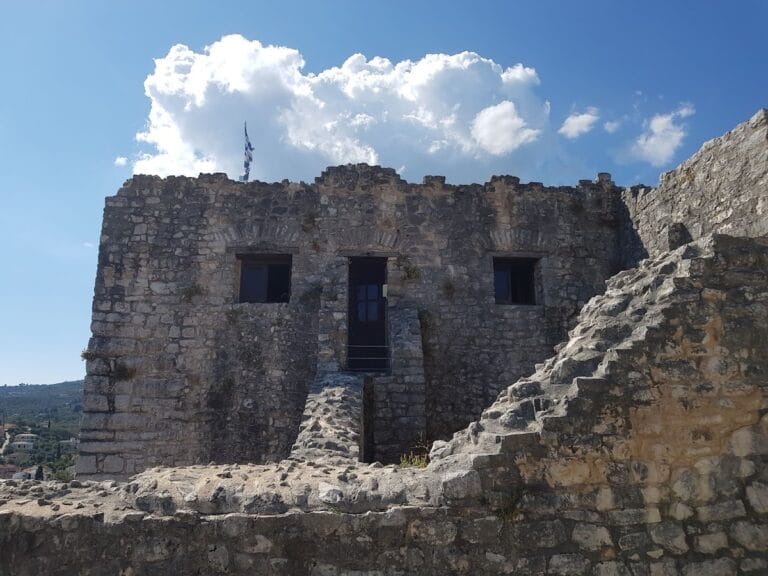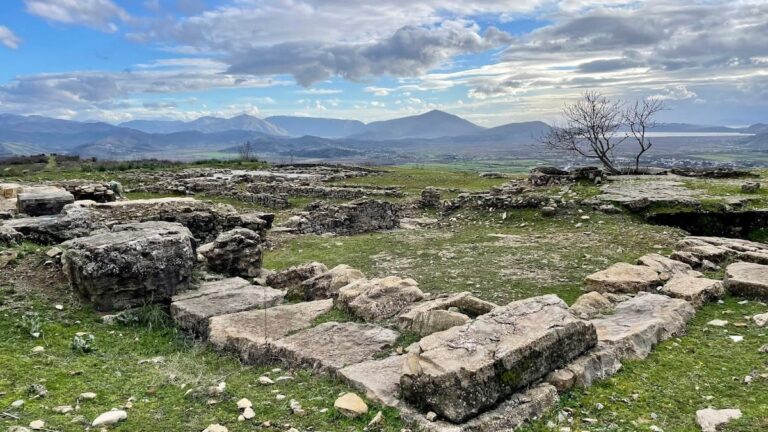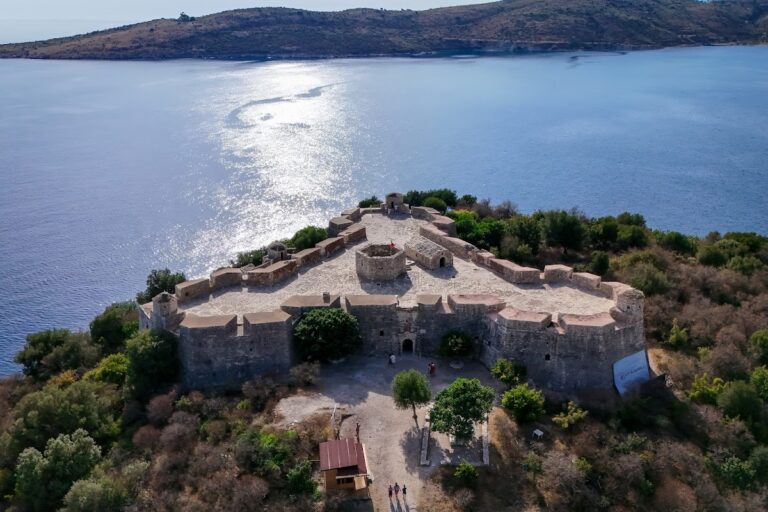Angelokastro: A Byzantine Fortress on Corfu, Greece
Visitor Information
Google Rating: 4.7
Popularity: Medium
Google Maps: View on Google Maps
Country: Greece
Civilization: Unclassified
Remains: Military
History
Angelokastro is a Byzantine fortress situated in the municipality of Paleokastrites, Greece. Constructed by the Byzantine Empire, it occupies a commanding position on Corfu’s northwest coast, overlooking the sea and surrounding lands from a steep rocky promontory 305 meters above sea level.
The exact origins of Angelokastro remain uncertain, but its construction is often linked to the period of Michael I Komnenos and his son Michael II Komnenos, rulers known as Despots of Epirus. The earliest written record dates from 1272, when Giordano di San Felice took control of the castle as a representative of Charles of Anjou. Over time, the fortress became an essential part of Corfu’s defensive network, forming a triangle with two other castles, Gardiki and Kassiopi. Together, these strongholds protected the island from pirate raids and hostile invasions, most notably repelling three separate Ottoman sieges in the years 1537, 1571, and 1716. Throughout these conflicts, Angelokastro was never captured by enemy forces.
From 1387 through the late 1500s, Angelokastro functioned as the official capital of Corfu and served as the seat for the Venetian-appointed Provveditore Generale del Levante, the governor overseeing the Ionian Islands and commander of the Venetian fleet stationed there. During invasions, the castle provided shelter for local peasants who often joined the garrison in defending the fortress. In times of peace, the site also became a hub for commerce and local development.
After Venice assumed control of Corfu in 1386, they invested in maintaining Angelokastro, funding necessary repairs. Initially, Venetian officials appointed the castle’s commanders, but later appointments came from the local nobility of Corfu. Angelokastro’s defenses proved their strength during a year-long siege by Genoese forces in 1403, as well as during the Ottoman attacks in the mid-16th century. The garrison was largely composed of local inhabitants, demonstrating the castle’s role as both a military and community stronghold.
As advances in warfare made the fortress less strategically important, Angelokastro gradually fell into neglect and disrepair. This decline ended in 1999 when the Greek Ministry of Culture and the European Union began restoration efforts. Excavations at that time revealed remains of earlier occupation, including Early Christian artifacts and Byzantine structures dating from the 5th to 7th centuries AD. These findings suggest the site’s significance extended far beyond the medieval era, highlighting a long history of fortification and religious presence.
Remains
Angelokastro is perched atop a precipitous cliff, with the fortress’ defensive walls thoughtfully integrated into the steep natural terrain, particularly protecting its western, northwestern, and southern sides. This blending of architecture with the landscape is unusual among Byzantine castles, reflecting both strategic advantage and adaptation to the site’s rugged environment.
The castle’s main entrance faces north and is guarded by a circular tower, a typical feature designed to strengthen access points against attackers. Directly opposite the gate lie the remains of the garrison quarters where soldiers and defenders once lived. Within the fortress, three underground cisterns provided a vital water supply, ensuring the occupants could withstand prolonged sieges without relying on external sources.
Surviving battlements, the height of castle walls with defensive walkways, are located primarily on the northeastern side. A smaller gate once existed on the southern approach, although only traces remain today. At the highest point on the southern section of the acropolis stands a church dedicated to Archangel Michael. This church has notable religious significance as it was built atop the foundations of an earlier Early Christian three-aisled basilica, linking the site’s spiritual history with its military past.
On the western side of Angelokastro lies a cemetery featuring seven anthropomorphic graves carved directly into the rock. These graves resemble stone coffins shaped like human bodies, though their precise origin has not been established. This unusual burial practice adds a unique archaeological dimension to the site.
To the east, a small chapel dedicated to St. Kyriaki is carved into the rock face. This modest structure also served as a hermitage, a secluded place for solitary religious devotion. The chapel preserves paintings from the 18th century, offering insight into continued religious use of the castle well beyond its military role.
Angelokastro’s overall architectural style suggests influences from Frankish and South Italian design, though centuries of ruin and decay make these elements difficult to discern clearly today. Alongside Gardiki and Kassiopi castles, as well as Venetian fortifications in Corfu city such as the Citadel and New Fort, Angelokastro remains one of the most imposing and historically significant defensive sites in the Ionian Islands.










